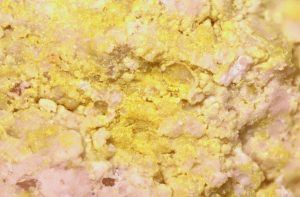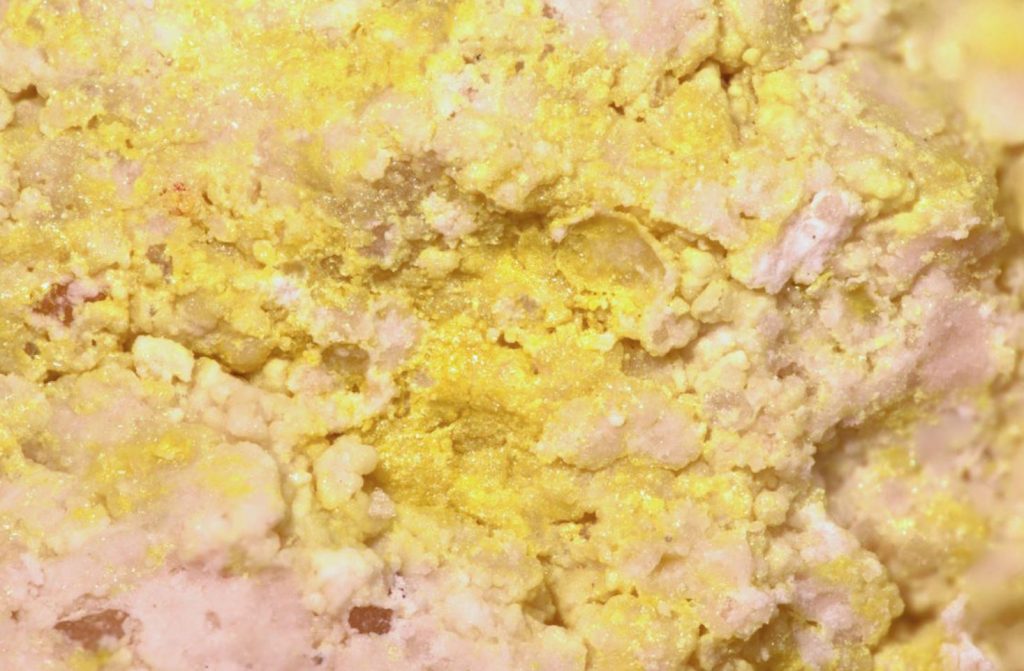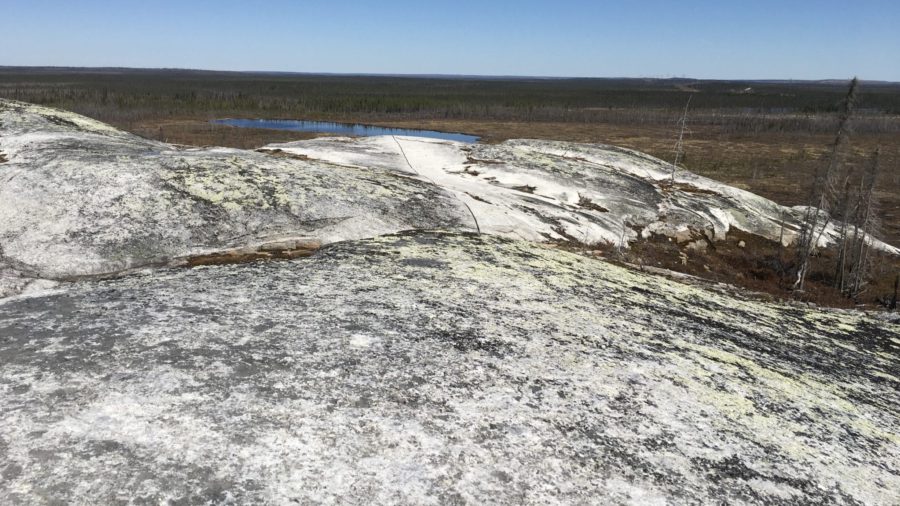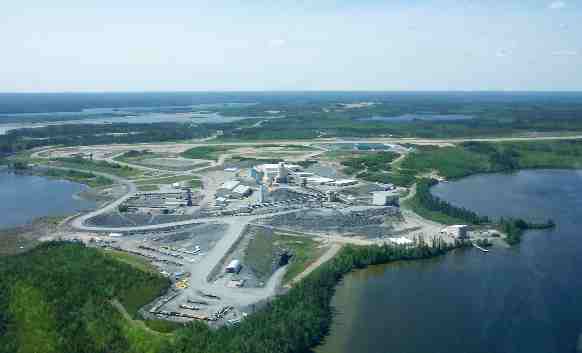[caption id="attachment_1003720753" align="aligncenter" width="492"]
 Intergrown finchite and carnotite (yellow) with celestine (white/clear). (Image: Travis Olds, University of Nortre Dame)
Intergrown finchite and carnotite (yellow) with celestine (white/clear). (Image: Travis Olds, University of Nortre Dame)[/caption]
The U.S. Geological Survey has taken a look at parts of Texas, New Mexico and Oklahoma, and found there may be 40 million lb. of undiscovered uranium resources in the region. Geologists examined calcrete formations, which are well documented in Australia and Namibia, but this is the first known occurrence of in the United States. Better yet, the deposits are near surface.
The USGS also noted it found a new uranium species – finchite – named after one of its uranium scientists, Warren Finch. As well as uranium, finchite contains strontium, vanadium and water. (Click
here to read the complete assessment.)
Canada’s uranium resources are primarily found in the Athabasca Basin in northern Saskatchewan. Deposits there are of a basement-hosted, unconformity type commonly associated with faults or fracture zones. Other parts of the country have potential or historic producers.
The United States is the largest consumer of uranium for power generation. Forty million lb. of uranium oxide would supply the U.S. nuclear industry for about one year. American uranium mines produced 2.5 million lb. of uranium oxide in 2016, according to the World Nuclear Association.
Canada, on the other hand, produced 36.4 million lb. of uranium oxide last year. That number is 23% of world production, making Canada second only to Kazakhstan (40%) and ahead of Australia (10%). Up to 85% of Canadian uranium is exported, the value of which approached $2 billion in 2016 according to figures from Natural Resources Canada.
The news that Cameco is suspending the McArthur River mine and Key Lake mill for an anticipated period of 10 months will do little to change Canadian exports. The company will supply its customers from stockpiles.
Decisions such as Cameco made are driven by continued fall in the price of uranium. It current sits at about US$20 per pound. The last time it was this low was 2005, and it is a very far cry from a high approaching US$140/lb. in 2007. It would be a rare producer who could make money over the long term at $20-uranium.
There may be some reason for optimism. Analysts are beginning to think the price might double by 2018 (Mining.com) or even reach the US$51 to US$54 range (Seeking Alpha). Barron’s published an article in July 2017 that outlined why the uranium price of US$70/lb. is not unreasonable 10 years from now.

 Intergrown finchite and carnotite (yellow) with celestine (white/clear). (Image: Travis Olds, University of Nortre Dame)[/caption]
The U.S. Geological Survey has taken a look at parts of Texas, New Mexico and Oklahoma, and found there may be 40 million lb. of undiscovered uranium resources in the region. Geologists examined calcrete formations, which are well documented in Australia and Namibia, but this is the first known occurrence of in the United States. Better yet, the deposits are near surface.
The USGS also noted it found a new uranium species – finchite – named after one of its uranium scientists, Warren Finch. As well as uranium, finchite contains strontium, vanadium and water. (Click
Intergrown finchite and carnotite (yellow) with celestine (white/clear). (Image: Travis Olds, University of Nortre Dame)[/caption]
The U.S. Geological Survey has taken a look at parts of Texas, New Mexico and Oklahoma, and found there may be 40 million lb. of undiscovered uranium resources in the region. Geologists examined calcrete formations, which are well documented in Australia and Namibia, but this is the first known occurrence of in the United States. Better yet, the deposits are near surface.
The USGS also noted it found a new uranium species – finchite – named after one of its uranium scientists, Warren Finch. As well as uranium, finchite contains strontium, vanadium and water. (Click 




Comments